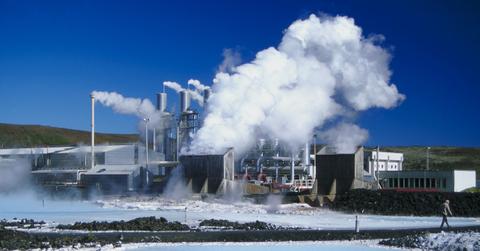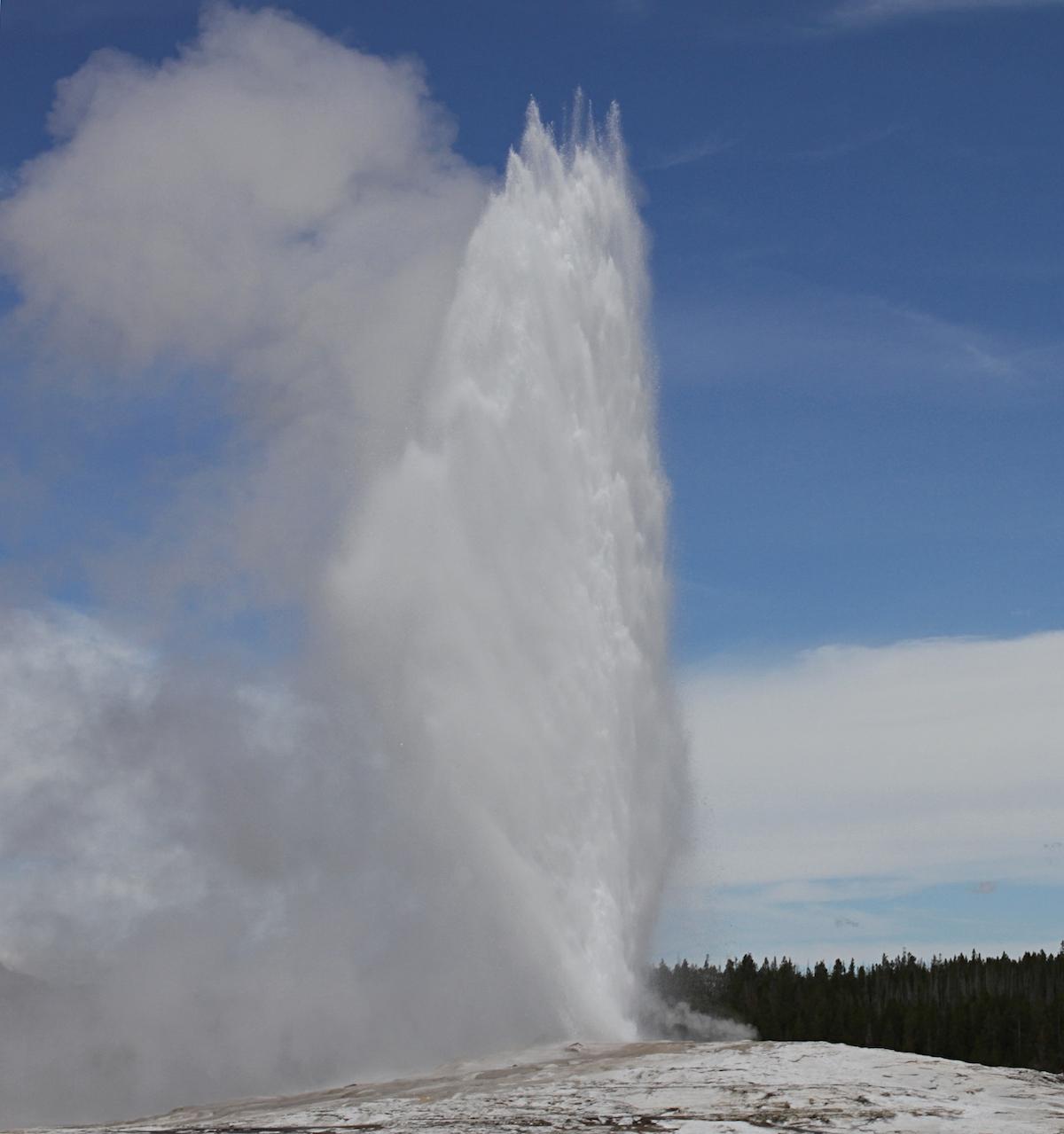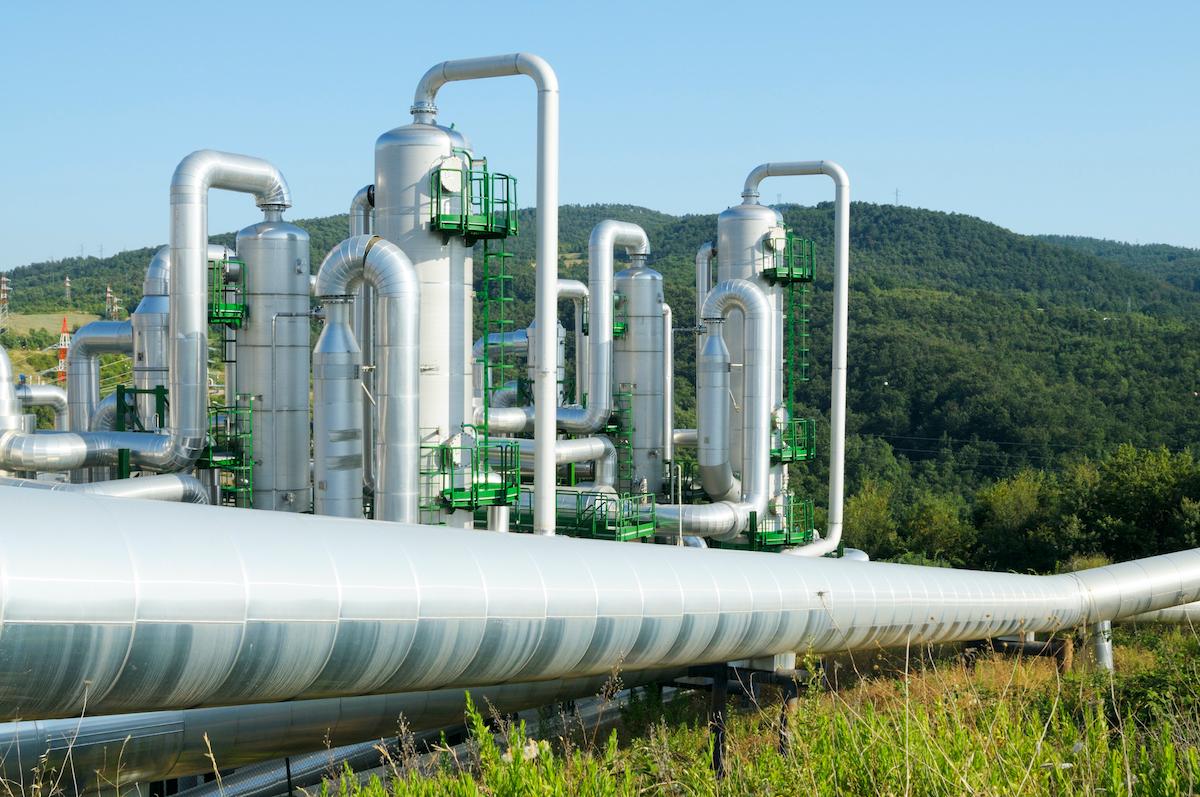Geothermal Energy: How it Works and Stacks Up Against Coal
Here's everything you need to know about geothermal energy.
Updated April 16 2020, 2:54 p.m. ET

Geothermal Plant and Blue Lagoon leisure park, Iceland.
To maintain the goals of the Paris Agreement and save the Earth from ecological breakdown, one of the most important things experts agree we need to do is transition to a renewable energy economy. While most of us may associate renewable energy with wind energy and solar energy, there are several other sources of clean energy that are growing in popularity. One such source is geothermal energy.
You may not have personal experience with geothermal energy, but in some areas, it’s the norm. For example, Reykjavik, Iceland, uses geothermal energy to heat 95 percent of its buildings — and some people consider Reykjavik to be one of the world’s cleanest cities, according to HowStuffWorks.
If you’ve ever wondered what exactly geothermal energy is, how it works, and if it’s a viable option to power your home, read on for everything you need to know about geothermal energy.
What is geothermal energy?
Geo comes from the Greek word for earth, and thermal comes from the Greek word for heat. So, geothermal energy is a kind of renewable energy derived from the sub-surface of the earth.
Geothermal's energy source

As mentioned above, the source of geothermal energy is heat stored in the sub-surface of the Earth, such as in volcanoes, hot springs, volcanoes, geysers, and underground reservoirs of water — but most interestingly, it can also be generated from the soil located a few meters below the earth’s surface.
Is geothermal energy renewable or nonrenewable?
Geothermal energy is a renewable source of energy. That’s because garnering geothermal energy does not deplete the energy source, and the planet will continue naturally producing geothermal energy over and over.
Geothermal energy vs. fossil fuels
Geothermal energy is a renewable energy source, so unlike fossil fuels, geothermal energy cannot be depleted. But just how much better for the environment is geothermal energy than coal?
According to the U.S. Department of Energy’s Office of Energy Efficiency & Renewable Energy (EERE), geothermal energy uses far less land than fossil fuels — on average, geothermal power plants use 404 m2 of land per GWh, while coal uses 3642 m2 of land per GWh.
Modern, closed-loop geothermal power plants do not emit any greenhouse gasses, and the energy can be extracted without burning any coal, oil, or gas; additionally, geothermal fields produce about one-sixth of the CO2 that a “relatively clean” natural gas power plant produces, according to EERE. Natural gas is a kind of fossil fuel that produces less emissions than coal or oil, but still has a high environmental impact and high emissions compared to renewable energy.
How does geothermal energy work?
As explained by the EERE, industrial geothermal energy is typically extracted by drilling wells into underground reservoirs filled with steam and hot water. These geothermal heat sources can then be used to power heating, cooling, electricity, and more.
At home, a well is drilled and filled with a pipe or “loop.” The loop transfers the stable underground temperature into a house’s geothermal unit, which is used as both a furnace and air conditioner, according to Popular Mechanics.
Advantages of geothermal energy
Even though geothermal energy is not talked about as much as solar and wind energy, there are many advantages to using geothermal energy. Some advantages of geothermal energy include:
- Renewable
- Produced domestically
- Uses less surface land than wind and solar energy
- Consistent because it can be extracted no matter the weather
- Works very well for heating and cooling
- Does not use any fossil fuels and often has no emissions
Disadvantages of geothermal energy

Renewable energy sources are certainly better than using fossil fuels for energy, but they are not perfect. Some disadvantages of geothermal energy include:
- High initial costs
- Risk of accidentally releasing harmful greenhouse gases in the process
- Can trigger surface instability which can lead to earthquakes, in rare instances
- Can only power electricity on an industrial scale — for homes, it only powers heating and cooling
Geothermal energy for homes
You’ve seen houses with solar panels on the roof — but did you know you can power the heating and cooling in your home with geothermal energy as well? And no, you don't need a geyser in your backyard.
It's important to note that only industrial geothermal power plants can use geothermal energy to generate electricity — at-home geothermal plants can only power heating and air conditioning.
According to Eco Home, in the U.S. and Canada, once you hit about 6 to 10 meters below the earth’s surface, surface temperature no longer affects the underground temperature. The sub-surface temperature remains pretty constant at between 8 and 10 degrees Celsius (46.4 to 50 degrees Fahrenheit). To power a home with geothermal energy, the earth underneath your property does not need to be as hot as you may think — underground temperatures are consistent, and consistent underground temperatures are enough for a pump to extract heat energy, and then transfer that energy to your home.
How to use geothermal energy at home
If you’re interested in heating and cooling your home with geothermal energy, you’ll need to start out by getting an energy audit on your house, according to Geothermal for All. The website is filled with information on installing geothermal energy at home — for example, first you’ll need to decide if you need vertical loops (most common), a horizontal loop, a pond loop, or an open loop.
If installing geothermal energy at your house is something your interested in, check out Geothermal for All for more information.
Is geothermal energy expensive?
As explained by Conserve Energy Future, the upfront cost of developing a geothermal energy site can be quite high. Installing a geothermal heat pump for a house seems to range from $10,000 to $30,000. Fortunately, the monthly savings on electricity bills help most people pay off those upfront costs within 10 years.
Additionally, the Federal government offers geothermal energy tax credits — so claiming your tax credit after installing geothermal energy could help reduce the cost significantly. So if you have the savings and your land is viable, geothermal energy is a solid option for heating and cooling your property.